Improvements in Android version 3.1
The Android 3.1 update has just been released a few days ago at the Google I / O 2011 conference. This version mainly focuses on changes in the ability to accelerate processing and updating system applications instead. Because of changing the external interface.
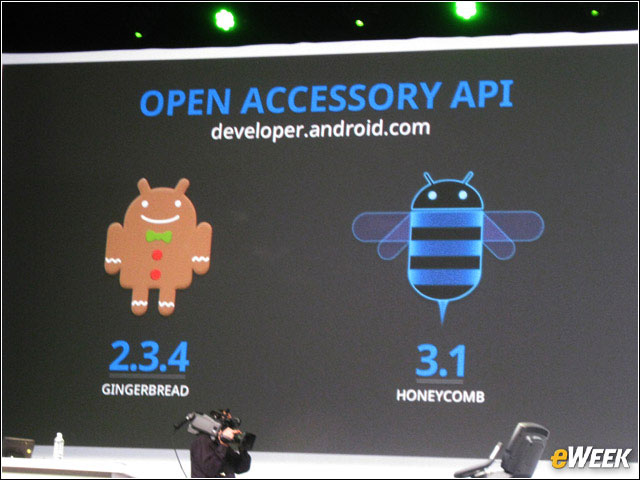
I. Improvements for users
1. Improved USB communication
The most notable feature in the updated version of Android 3.1 is the ability to support peripheral devices and accessories connected via USB. Users simply need to attach a keyboard, USB mouse, . and use it with tablets running HoneyComb 3.1.
When you mount a USB device, the hardware will search for the device-related applications and open it for you. You can even use your tablet as an external accessory such as a card reader, music device and portable hard drive. This feature also supports the Playstation and Xbox controller to help Users use them to play games right on Android tablets.
2. Expand the list of most recent applications (Recent App)
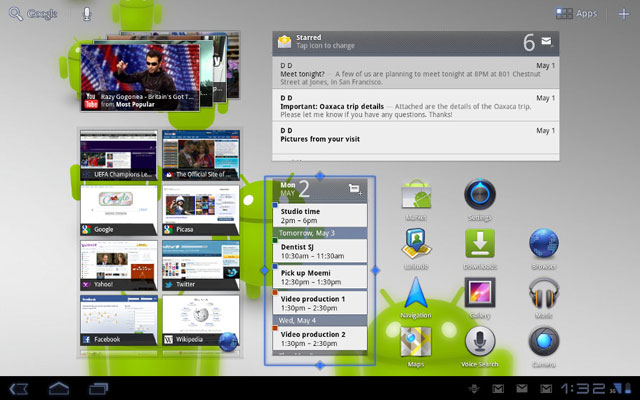
Android 3.1 has improved multitasking and instant access to a much larger number of applications, this number for the old version is only 5. Special Recent App listings are now open. extra wide. Users can scroll the list of closest applications vertically to view thumbnails of all tasks that have been and are being used, then touch any thumbnail to jump to work with the task corresponding.
3. It is possible to resize widgets on Home Screen
Android 3.1 offers more flexible customization with the Home Screen screen, which allows users to resize and expand widgets both horizontally and vertically using the supplied scroll bars.
4. Support for external keyboards and pointing devices
Now users can connect almost any type of external keyboard or mouse to Android-powered devices, to create a more familiar and efficient working environment. One or more input devices can be attached to the system at the same time via USB or Bluetooth communication, or a combination of both. In most cases, the connection process does not need to configure or use any drivers. When multiple devices are connected, the user can conveniently manage the keyboard and percussion that is working by using the settings available from the System bar.
For pointing devices, this platform supports most of the current mouse types. When they are connected, users can interact with the interface by pointing, selecting, dragging, moving, dragging, .
5. Support for joysticks and game boards (gamepad)
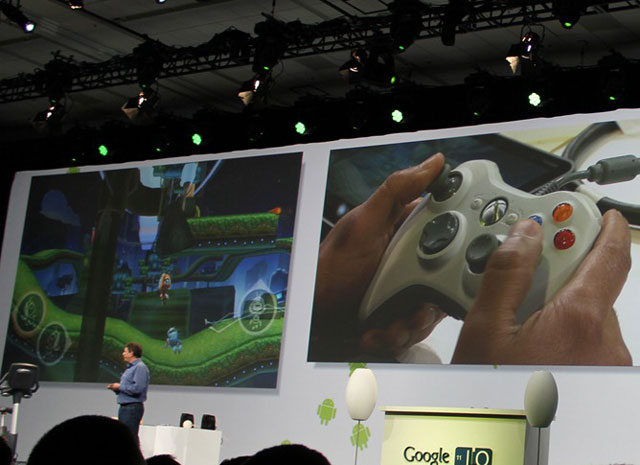
With the aim of improving the gaming platform, Android 3.1 has added support for most joysticks and gamepads connected via USB or Bluetooth. For example, users can connect the controller of Sony Playstation 3 and Xbox 360 via USB (Bluetooth communication is not working), Logitech Dual Action gamepad or racing controller to enjoy the game right on the computer Android board.
6. Improved Wi-Fi feature
Android 3.1 supports more powerful Wi-Fi features to ensure that users and their applications can take full advantage of the high-speed Wi-Fi access at home, at work, and while going away.
In addition, the Wi-Fi Lock feature allows applications to maintain a high-speed Wi-Fi connection even when the device's screen is turned off. Users can take advantage of this to listen to music, watch videos, and online conversation services for a long time, even if the phone is left in idle mode or the device screen is off.
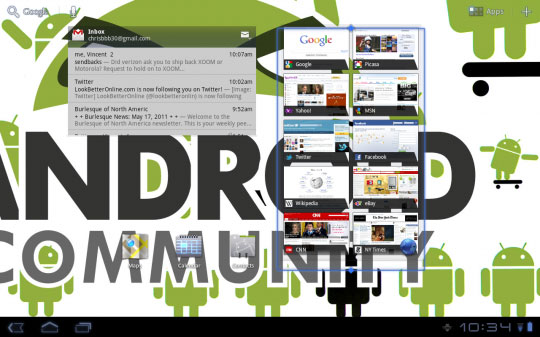
Users can now configure an HTTP proxy for each individual Wi-Fi access point in the Settings section. The browser uses HTTP proxies when communicating with the network via access points and other applications may also choose to do so. The platform also provides the ability to backup and restore proxy settings as well as defined user IPs.
The platform also supports the Preferred Network Offload (PNO), a background mode scan feature, which saves battery power in case Wi-Fi needs to be used continuously for a long time.
7. Update the application
Android 3.1 platform includes an updated suite of standard applications optimized for use on larger screen devices. Below is a list of improved applications.
a) Browser application
The Browser application includes many new features and improved user interface to make viewing web content simpler, faster and more convenient.
The Quick Controls UI feature, accessible from Browser Settings, has been expanded and redesigned. Users can now use controls to view thumbnails of opened tabs and close active tabs, as well as quick access to Settings and other controls.
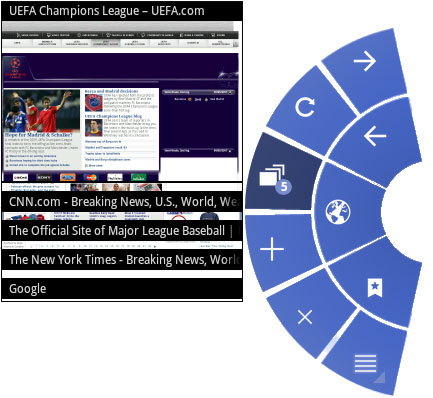
To ensure a seamless and powerful experience, the Browser extends support for popular web standards such as CSS 3D, animations, etc. for all websites, mobile phones or desktops. It also supports playback of HTML 5 video content. To manage your favorite content more easily, users can save a web page to the computer for offline viewing, including all types of styles and images. image. For convenient access to Google websites, an automated interface allows users to quickly log in and manage access when multiple users share a device.
For best performance, Browser adds plugins that use hardware acceleration. Therefore, page zooming performance is also significantly improved, making it faster to move and view web pages.
b) Gallery application
The Gallery application now supports Picture Transfer Protocol (PTP) so users can connect their cameras via USB interface and import images into Gallery with a single touch. The application also copies the images for storage on the memory card and allows the user to see the available storage on the device.
c) Calendar application
Calendar's grid frame is larger so users can read better and more accurately the displayed content. In addition, users can create a larger viewing area by hiding unnecessary controls. In addition, the controls in the date picker have also been redesigned to make it easier to view and use.
d) Contacts application
The Contacts app now allows you to locate contact lists more easily using the full-text search engine. The search results returned combining results from all other fields will be stored for that contact.
e) Email application
When replying or forwarding HTML messages, the Email application sends both plain text and HTML into a multi-part message. This ensures that the messages will arrive and be properly formatted for all recipients. To save battery power and minimize mobile data usage, the app will only bring emails from the server to only when the device is connected to a Wi-Fi hotspot.
An updated widget on HomeScreen allows users to quickly access more emails. Users can touch the Email icon at the top of the widgets to switch to labels like Inbox, Unread and Starred. The widgets can now resize, and scroll both horizontally and vertically.
8. Support businesses
Users can configure an HTTP proxy for each Wi-Fi access point. This allows administrators to work with users to easily name proxy servers, ports, and any subdomains. Configuring this proxy happens automatically by the Browser application when access points are available. Wi-Fi access is connected, and can be used by other applications. Proxy and IP configurations are backed up and restored via system update and device reset.
II. Features for developers
The Android 3.1 platform has improved and added new capabilities to help developers build and create powerful and compelling applications for tablets and other large screen devices.
1) Open API accessories for rich interactions with peripherals
Android 3.1 introduces a new API (application programming interface) for integrating hardware accessories with applications running on the platform. The API provides an interactive way on a variety of peripherals, from robotic controllers to music devices, sports bikes, and more. This platform provides services for detecting and identifying connected hardware, as well as notifying connected hardware related applications.
When a user plugs in a USB device, the platform will record information such as product name, accessory type, manufacturer, and version. It establishes contact with accessories and uses the information available to inform and launch an application if available. In addition, an accessory can provide a URL that allows users to find and download an appropriate application that can work with it. These features make it easier for the first time to set up the user and ensure that an appropriate application is available to interact with the connected hardware.
2) Optimize system performance
Android 3.1 includes many optimization activities that make applications run smoothly and respond to requests faster.
A new LRU cache layer allows applications to operate more efficiently from the cache. The application can use these cache classes to reduce computation time or download data from the network, while maintaining a reasonable memory for stored data.
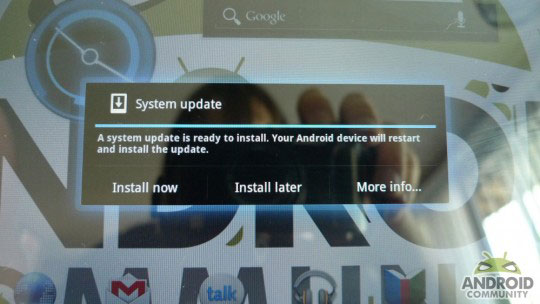
A new graphical method called setHasAlpha , allows applications to use ambiguous suggestions from bitmaps. This provides extra performance for some types of blits and is particularly useful for applications that use bitmap ARGB_8888 .
You should read it
- 8 best free calendar apps for Android
- How to Uninstall Updates on Android
- The best Android apps
- 7 best Android apps are not available on Google Play Store
- Google has allowed developers to force users to update Android apps
- Great apps only available on Android
- How to update apps on Mac
- Chat, Google's all-new messaging app that replaces Android Message and SMS
May be interested
- Android SDK - Download Latest Android SDK
 android sdk is a free and specialized programming language that allows you to create android applications.
android sdk is a free and specialized programming language that allows you to create android applications. - What's new in Android P 9.0?
 google has just released a trial version of the latest android p 9.0 operating system for developers, the final version will be available for android devices in the near future.
google has just released a trial version of the latest android p 9.0 operating system for developers, the final version will be available for android devices in the near future. - 6 of the most 'craziest' Android improvements in history
 these failed efforts also leave valuable lessons and enable tech companies to create better, faster and more user-friendly products.
these failed efforts also leave valuable lessons and enable tech companies to create better, faster and more user-friendly products. - Android App Version Checks
 checking the application version on android will help you know if you need to upgrade the application or not, when tracking information about the new version of the application.
checking the application version on android will help you know if you need to upgrade the application or not, when tracking information about the new version of the application. - How to download and install LDPlayer 9, Android emulator software on PC
 ldplayer is an android emulator software that helps users play games and use android applications on computers and pcs. ldplayer version 9 is now available with many new improvements that are faster, smoother, and consume less cpu and memory. ram. download ldplayer 9 to your computer to experience many new things with extreme performance.
ldplayer is an android emulator software that helps users play games and use android applications on computers and pcs. ldplayer version 9 is now available with many new improvements that are faster, smoother, and consume less cpu and memory. ram. download ldplayer 9 to your computer to experience many new things with extreme performance. - Run Google Android on your computer
 would you like to try the latest version of android os from google without buying a phone? the following article will help you fulfill this desire with the android sdk simulation version.
would you like to try the latest version of android os from google without buying a phone? the following article will help you fulfill this desire with the android sdk simulation version. - Microsoft unveiled a new version of Windows 10 with improvements in RAW images and light themes
 yesterday 24/1, microsoft released a preview of a new version of windows 10, promising to contain valuable improvements.
yesterday 24/1, microsoft released a preview of a new version of windows 10, promising to contain valuable improvements. - How to download the old version of Android application and block automatic update
 how to return to the old version of the android application? using the old version may be more suitable for you than upgrading to a new version of the application.
how to return to the old version of the android application? using the old version may be more suitable for you than upgrading to a new version of the application. - The face of the noticeable changes will appear on EMUI 10
 huawei has recently officially introduced emui 10, its important android customization version, with many notable improvements and additions.
huawei has recently officially introduced emui 10, its important android customization version, with many notable improvements and additions. - How to check and update the version of Android operating system in use
 how to update android, update android version, update security patch for android or update android operating system will be done through the instructions below, please consult.
how to update android, update android version, update security patch for android or update android operating system will be done through the instructions below, please consult.










 Distribute power to Data Center
Distribute power to Data Center File transfer between iPad and Mac
File transfer between iPad and Mac 10 things to help maintain Internet bandwidth
10 things to help maintain Internet bandwidth 7 ways to work faster in Windows 7
7 ways to work faster in Windows 7 Google Wallet: 5 things to know
Google Wallet: 5 things to know 5 tips to free up hard drive space
5 tips to free up hard drive space